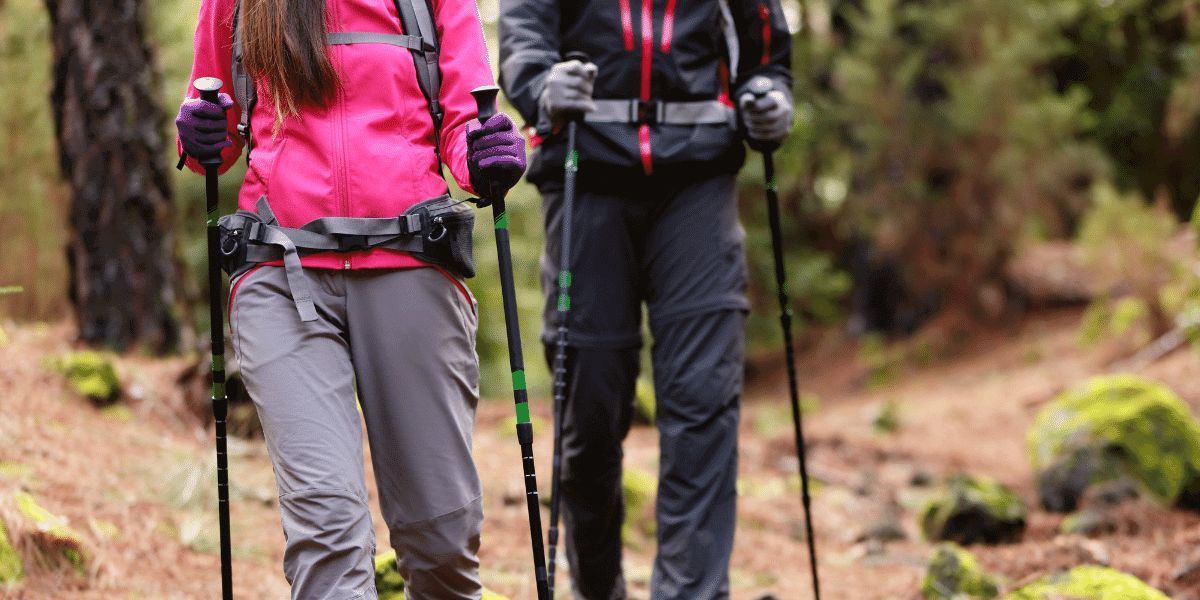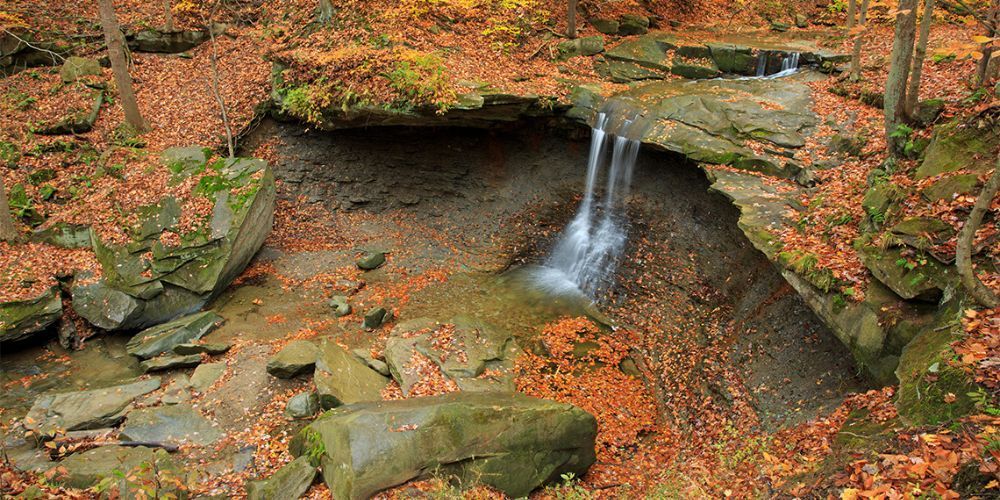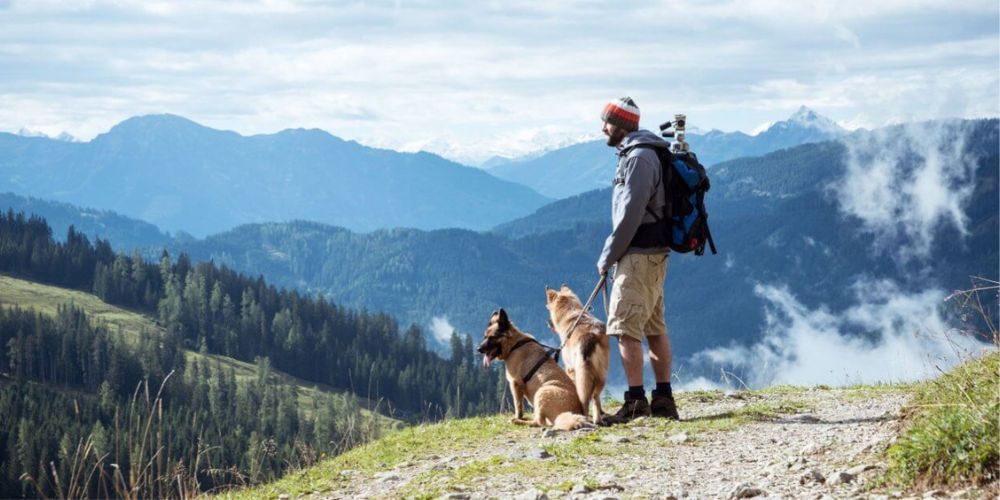The Benefits of Hiking Poles: Improve Your Outdoor Adventures
Hiking poles lend a hand in making your treks safer and more comfortable. Their design aids in maintaining balance over uneven terrain, demonstrating their practicality for long-distance walks. Furthermore, their collapsible feature makes storage no hassle, being able to fit snuggly into backpacks without taking much space. Poles like the Black Diamond Distance Z provide these characteristics. Now let's delve further into their unique attributes.
The best hiking poles for beginners are adjustable aluminum poles. They offer versatility with adjustable length and telescoping features, making them ideal for customization based on preference or terrain demands. Additionally, they are made from sturdy, rust-resistant aluminum, providing reliability and durability for novice hikers.

Top 3 Hiking Poles
Black Diamond Distance Z Trekking Poles
When it comes to hiking long distances, having lightweight yet durable gear is crucial. The Black Diamond Distance Z trekking poles strike a perfect balance between these two elements. Made with high-quality materials, these poles are designed to endure the rigors of extended use without compromising on performance.
What sets these poles apart is their collapsible design. This feature not only allows for convenient packing but also makes it incredibly easy to deploy them when needed. Imagine the satisfaction of effortlessly setting up your hiking poles in a matter of seconds as you transition from flat terrains to challenging inclines during your hike. The added convenience makes these poles a go-to choice for long-distance trekkers who value efficiency.
Leki Micro Vario Carbon Lady DSS Trekking Poles
Specifically tailored for female hikers, the Leki Micro Vario Carbon Lady DSS trekking poles offer a winning combination of lightweight carbon construction and ergonomic design. They are engineered with the comfort and needs of female adventurers in mind.
One standout feature of these poles is the innovative Dynamic Suspension System (DSS) which aims to reduce impact on joints. This is an invaluable asset, especially during long hikes or treks with varying terrain. With each step, you'll appreciate the reduced strain on your joints as these poles cushion your movements, allowing you to maintain your pace comfortably.
MSR DynaLock Ascent Carbon Backcountry Poles
For hikers who frequently encounter challenging terrains and demand a high level of performance from their equipment, the MSR DynaLock Ascent Carbon backcountry poles make an ideal choice. Renowned for their strength and durability, these poles are engineered to withstand heavy usage and harsh conditions.
The DynaLock adjustment system featured in these poles provides secure and easy length customization. This means you can quickly adapt the length based on the demands of different terrains or even share the pole with a fellow hiker without any hassle. The reassurance of having secure and reliable pole adjustments allows you to focus entirely on conquering rugged landscapes with confidence.
With a comprehensive understanding of the features and advantages offered by each of these top 3 hiking poles, you're now ready to choose the one that aligns perfectly with your outdoor pursuits.
Selecting the Right Poles: Terrain and Trail Considerations
When choosing hiking poles , the terrain and trail conditions play a crucial role. The type of terrain you navigate and the trails you trek on greatly influence the kind of hiking poles you should consider. Picking appropriate poles based on these factors ensures a safer, more comfortable, and enjoyable hiking experience.
Let's first focus on terrain considerations. When faced with rocky or uneven terrain, stability and traction become paramount. Therefore, it's crucial to opt for hiking poles with durable tips that provide a firm grip on rugged surfaces. Additionally, comfortable grips are essential for ensuring a secure hold on the poles, especially when navigating through challenging terrains. For such conditions, telescoping poles offer versatility and adaptability, allowing hikers to adjust the length based on the specific demands of varied terrains.
Moving on to trail considerations, steep inclines necessitate a different set of features in hiking poles to ensure balance and safety. Adjustable-length poles play a vital role in helping hikers maintain equilibrium while ascending inclines. On the other hand, shock-absorbing poles are particularly beneficial for reducing strain on joints during descents, providing comfort and support throughout the journey.
By carefully considering these aspects before selecting your hiking poles , you can ensure that your gear is tailored to meet the specific demands of your outdoor adventure.
Understanding how different terrains and trails impact your gear choice is key to maximizing comfort and minimizing strain during your outdoor excursions.
Key Features to Look For in Hiking Poles
When choosing hiking poles , several critical features contribute to a comfortable and beneficial hiking experience. The weight of the poles significantly impacts fatigue levels during long hikes. Lightweight poles are indispensable for prolonged use, minimizing strain on arms and shoulders, enhancing endurance, and reducing overall tiredness.
Carrying lighter poles also lessens the additional burden throughout the journey.
In addition to weight, the adjustability of the poles plays a crucial role. This feature provides versatility, enabling hikers to modify the length of the poles according to various terrains and individual height requirements. For example, when climbing uphill, shorter poles can be more convenient, while longer poles offer better support during descents. Adjustable-length poles thus cater to diverse hiking conditions and accommodate users of varying heights.
Another vital feature is shock absorbers, which significantly decrease strain on joints and muscles, particularly during downhill sections. These absorbers work by reducing the impact force transferred from the ground through the poles, subsequently alleviating stress on leg muscles. As a result, hikers can maintain a steadier pace and effectively manage challenging terrain without overexertion or discomfort.
Considering these essential features ensures that hikers find the most suitable poles for their respective needs, optimizing comfort and performance throughout their outdoor expeditions.
With this comprehensive understanding of these critical features, hikers are well-equipped to make informed decisions when selecting their hiking poles.
Armed with this knowledge, hikers are poised to uncover the myriad benefits awaiting them as they stride confidently with their trusty hiking poles in hand.
The Advantages: Enhanced Stability and Support, Reduced Fatigue and Joint Strain
When you’re out on the trails, facing irregular, rocky, or steep terrain, stability is paramount. This is where hiking poles shine—they provide essential support and balance by distributing your weight across multiple points of contact with the ground.
Imagine walking on a narrow, winding mountain trail or through a dense forest with roots and rocks scattered along the path. This is where hiking poles come to the rescue. By providing extra points of contact with the ground, they significantly enhance your stability and help prevent slips and falls. Whether you're crossing streams or navigating downhill slopes, having that additional support can make all the difference between a smooth hike and a precarious one.
Not only do hiking poles enhance stability and support, but they also play a crucial role in reducing fatigue and strain on your body as you cover longer distances. As you walk, your legs and knees bear much of your weight. This continuous impact can cause discomfort and strain, especially during extended hikes on challenging terrain.
When you use hiking poles, they help alleviate some of this pressure by allowing your upper body to share the load. This shifts some of the effort from your lower body to your arms and shoulders, effectively reducing the strain on your legs and knees. As a result, you’ll feel less fatigued even after covering long distances.
Additionally, using hiking poles engages your upper body muscles, promoting a more balanced distribution of effort throughout your body. By involving these muscles, you can lessen the strain on your lower body and minimize overall fatigue. It's almost like getting an upper-body workout while enjoying your hike!
Furthermore, studies have shown that using hiking poles can reduce energy expenditure by up to 20% when walking on flat terrain, making it easier to sustain endurance on longer treks. This added endurance can be a game-changer, especially during multi-day hikes or when tackling challenging ascents.
In summary, hiking poles not only provide enhanced stability and support on tricky trails but also contribute to reduced fatigue and joint strain, making them valuable assets for hikers of all levels. Whether you’re navigating rugged landscapes or simply looking for a way to minimize fatigue during long walks, investing in a good pair of hiking poles can make your outdoor adventures more enjoyable and sustainable.
With a solid understanding of the benefits of hiking poles under our belts, it's time to shift gears and explore how to properly utilize these invaluable tools in "Techniques: Mastering the Use of Hiking Poles".
Techniques: How to Properly Use Hiking Poles
When it comes to using hiking poles , it's not just about buying a good pair and hoping for the best. Proper technique is key to maximizing the benefits. Let's start with tackling uneven terrain.
Uneven Terrain
First, when you encounter uneven ground, it's crucial to adjust the length of your poles. Shorten them for uphill climbs to help increase your power and propel yourself upward, then lengthen them slightly for downhill sections to help maintain balance and reduce stress on your joints.
Here's a general idea of what you should be doing when walking uphill or downhill:
Uphill Technique
Plant Poles Slightly Ahead: By placing your poles slightly ahead of your body and pushing down, you can propel yourself upward more effectively. This helps reduce fatigue in your legs and provides additional stability on steep inclines.
Engage Your Poles with Each Step: Ensuring that you drive your poles into the ground with each step helps distribute your weight evenly, reducing strain on your legs during ascent.
These techniques are particularly useful for maintaining balance and reducing leg strain during prolonged ascents.
Downhill Technique
Place Poles Slightly Behind: Positioning your poles slightly behind you as you descend can provide essential support and significantly reduce the impact on your knees and other joints. It gives you extra traction and helps regulate your pace.
Another important aspect is adapting these techniques to varying trail conditions. For instance, if you’re going up a really steep hill, you might consider shortening the poles further than usual to get more leverage. Conversely, lengthening the poles slightly on inclines can help improve stability and balance.
In addition, ensuring that the wrist straps are snug but still allow movement will play a vital role in distributing weight support while assisting in effective pole planting on varying terrains.
By mastering these fundamental techniques for both uphill and downhill terrains, hikers can optimize their use of hiking poles , improving their stability while reducing potential fatigue and joint stress—ultimately enhancing their overall outdoor experience.
As we've explored essential techniques for using hiking poles effectively, understanding how to care for and maintain them is equally crucial to ensure they remain in top condition for all your outdoor adventures.

Care and Maintenance Tips
Hiking poles can be crucial companions on your outdoor adventures, providing support and stability when you need it most. To ensure they remain reliable and in good condition, here are a few important care and maintenance tips to keep in mind.
Regular Cleaning
After each use, take the time to wipe down your hiking poles. This simple act not only helps keep them clean but also allows you to inspect them for any signs of damage or wear. Look for cracks, bends, or loose parts that may indicate the need for repair or replacement. By catching these issues early, you can prevent more significant problems from developing.
Regular cleaning also removes dirt, moisture, and debris that can accumulate on the poles during your outdoor excursions. This prevents premature wear and ensures that the locking mechanisms and other components remain in optimal working condition. A little bit of maintenance after each adventure can go a long way in prolonging the lifespan of your hiking poles.
Storage
When you're done with your hike, don't just toss your hiking poles in the corner of a damp garage or hot attic. Proper storage is crucial to prevent damage from moisture or extreme temperatures. Find a cool, dry place to store your poles, keeping them away from direct sunlight and excessive heat. This simple measure helps to preserve the integrity of the materials and extend the lifespan of your hiking poles.
If you have adjustable-length poles, consider loosening the sections before storing them. This practice reduces tension on the locking mechanisms, which can help prevent them from getting stuck or damaged over time. Additionally, storing your hiking poles properly decreases the likelihood of rust or corrosion, especially for those made from aluminum.
Caring for your hiking poles doesn't have to be complicated, but it does require regular attention and a bit of proactive maintenance. By integrating these simple care practices into your post-hike routine, you can ensure that your hiking poles remain reliable and ready for your next outdoor adventure.
Ensuring the longevity of your hiking poles requires regular upkeep, much like tending to any valuable tool. As we shift focus towards brands delivering top-notch equipment, let's explore a detailed look at popular hiking pole manufacturers.
Brand Breakdown: A Look at Popular Hiking Pole Brands
When it comes to choosing hiking poles, it's valuable to know which brands are tried and tested. Each brand has its unique features designed to cater to different needs and preferences. Let's explore a few reputable brands and what sets them apart.
Black Diamond
Black Diamond has established itself in the hiking community with its lightweight and collapsible poles. These poles are ideal for hikers seeking versatility across various terrains. Their collapsible feature makes them easy to store when not in use, and their lightweight nature ensures you can carry them effortlessly during your trek.
The design of Black Diamond poles offers durability without weighing you down, making them a popular choice for backpackers and long-distance trekkers. Their sturdy build provides reliability while ensuring comfort throughout the journey.
Leki
Leki is another prominent name in the hiking pole industry, offering a diverse range of poles with innovative features. One standout feature is the ergonomic grips that provide exceptional comfort, reducing strain on your hands during long hikes. Additionally, Leki poles often incorporate shock-absorbing systems, minimizing the impact on your joints and muscles as you navigate rugged trails.
These features make Leki poles an appealing choice for hikers prioritizing comfort without compromising on performance. Whether dealing with challenging terrain or simply seeking a more comfortable trek, Leki's range of innovative poles has something to offer.
MSR (Mountain Safety Research)
MSR has carved out a niche in the market by delivering durable and reliable poles specifically designed for strenuous treks in challenging environments. These poles are built to withstand the demands of arduous expeditions, making them a go-to choice for serious hikers and mountaineers.
MSR's commitment to durability ensures that their poles can endure tough conditions without compromising on performance. This level of dependability makes MSR poles an excellent investment for those embarking on demanding adventures where resilience is paramount.
Each of these brands caters to different needs and preferences, ensuring that there's a perfect fit for every type of hiker. Understanding the distinct features offered by these brands will guide you toward selecting the ideal hiking poles for your outdoor escapades.
In the vast expanse of the outdoors, the right gear can elevate your experience from ordinary to extraordinary. Your choice of hiking poles is no exception, and armed with knowledge about reputable brands, you're poised to make an informed selection that enhances your outdoor adventures.
Nature's Playbook
As an Amazon Associate I earn from qualifying purchases.










